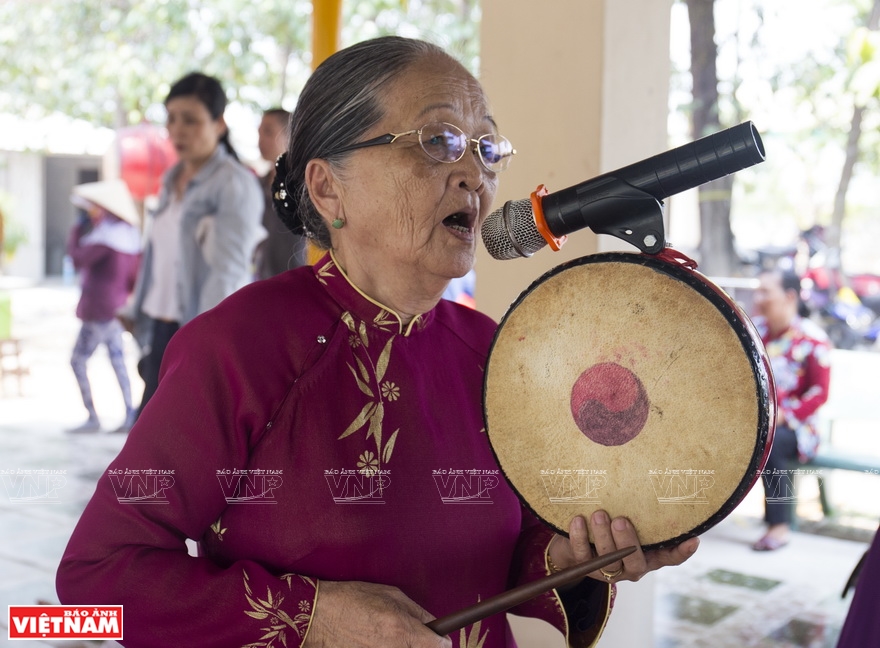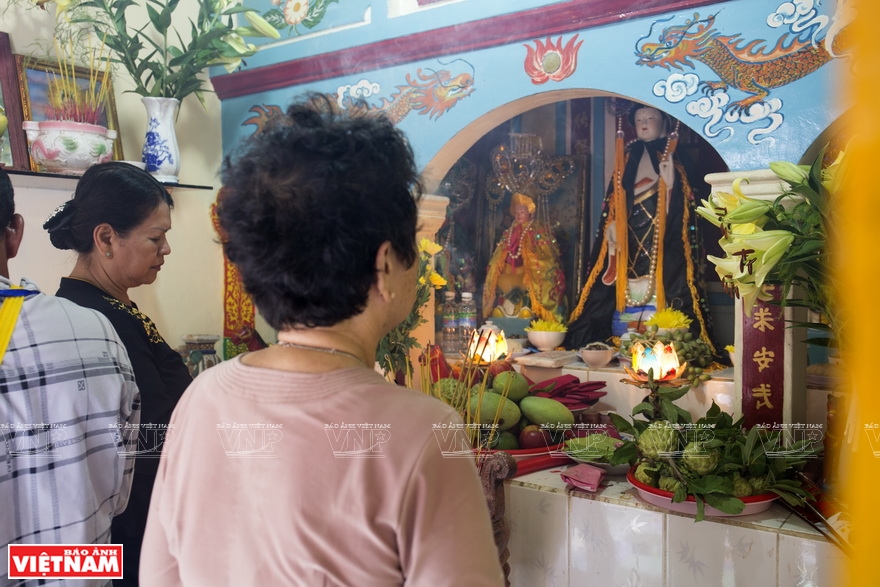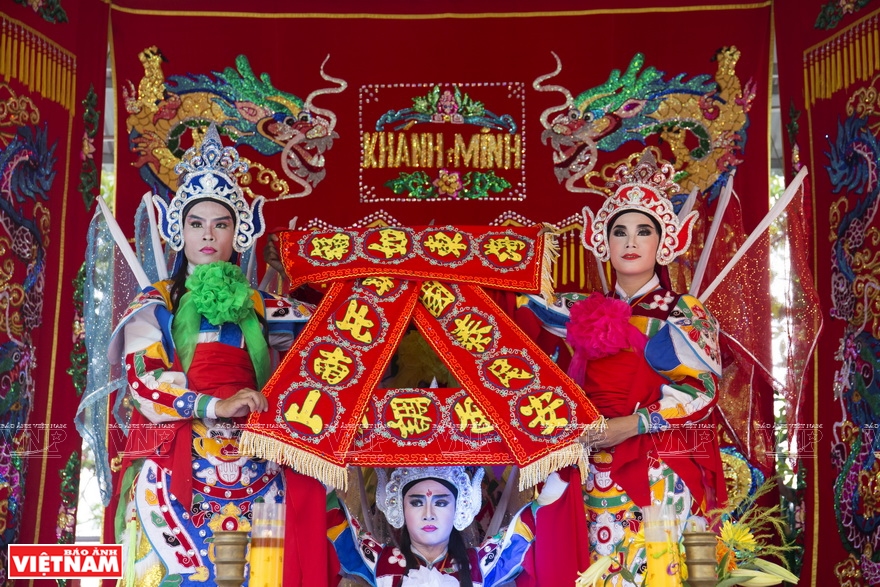Several days before the festival, local people visit the temple, cleaning the statues of the goddesses and changing their clothes.
Offerings of the festival can either be vegetarian with fruits, sticky rice, sweetened porridge, flowers and incense; or chicken, pork paste, liquor, betel and areca.
|
Mieu Ba Ngu Hanh worships the Ladies of the Five Elements of Fire, Earth, Metal, Water and Wood. |
The festival at Mieu Ba Ngu Hanh always includes a performance of bong roi, Dia Nang and tuong co (ancient classical opera) to entertain the goddesses.
The ceremony starts with the performance of bong roi which is a ceremonial art form comprising of singing and dancing. In a bong roi performance, a singer stands in front of the altar with a small drum in his/her hand. The singer sings and beats the drum to invite the goddesses to the festival. The songs praise the merit of the goddesses and beg for their blessings and protection. The singing is followed by a dance in which performers in costumes and makeup hold trays of offerings on their heads and perform graceful acts symbolizing the making of offerings to the goddesses. The tunics of the bong roi performers are sophisticated, consisting of robes, dresses, caps, and scarfs.
|
A bong roi dancer will perform with the offering on her head. Dia Nang singers perform at the temple. |
Another performance at the festival is Dia Nang, a type of comedic classical drama. The performance, believed to entertain the goddesses, is a duet between a male singer, who is Dia (deity of earth) and a female singer, who is Nang (fairy). The singing features folk songs, poems, proverbs, and verses created by the singers. It also includes spontaneous dialogue between the singers in colloquial languages.
Dia Nang singing is followed by dance performances.
The festival features the beliefs of southern people and reveals the beauty of their folk culture.

 The formality of beating a drum to inform the goddesses of the offerings.
The formality of beating a drum to inform the goddesses of the offerings.



